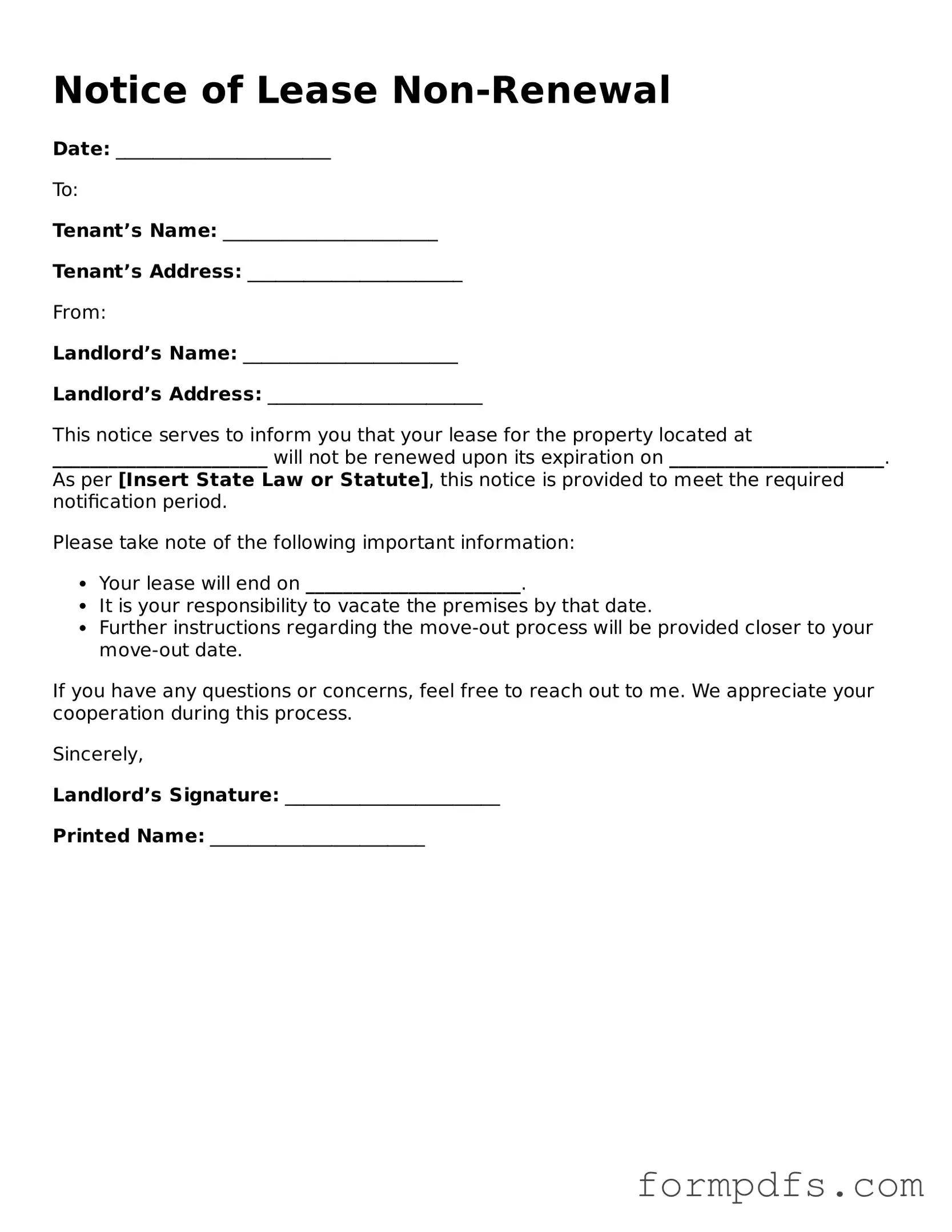What is a Notice of Lease Non-Renewal?
A Notice of Lease Non-Renewal is a formal document that informs a tenant that their lease will not be renewed at the end of its term. This notice is typically provided by the landlord or property manager and serves as an official communication regarding the future of the tenancy. It is important for both parties to understand the implications of this notice.
Why would a landlord issue a Notice of Lease Non-Renewal?
There are several reasons a landlord might choose to issue a Notice of Lease Non-Renewal. These can include plans to sell the property, the need for renovations, or simply a decision to not continue the rental relationship for personal reasons. Sometimes, it may also stem from issues related to the tenant's behavior or failure to comply with lease terms.
How much notice must a landlord give to the tenant?
The required notice period can vary by state or local laws. Generally, landlords are expected to provide notice anywhere from 30 to 60 days before the lease expiration date. It is crucial for landlords to check their specific jurisdiction's regulations to ensure compliance with local laws.
Can a tenant contest a Notice of Lease Non-Renewal?
While tenants can express their concerns about a Notice of Lease Non-Renewal, contesting it may not be straightforward. If the notice complies with legal requirements, the tenant may have limited options. However, if the tenant believes the notice is retaliatory or discriminatory, they may have grounds to seek legal advice or challenge the notice through appropriate channels.
What should a tenant do upon receiving a Notice of Lease Non-Renewal?
Upon receiving a Notice of Lease Non-Renewal, tenants should first review the document carefully. They should note the date by which they must vacate the premises. It may also be wise to begin looking for alternative housing. If there are any questions or concerns about the notice, tenants should consider reaching out to the landlord for clarification or seek legal advice.
Is a Notice of Lease Non-Renewal the same as an eviction notice?
No, a Notice of Lease Non-Renewal is not the same as an eviction notice. The former informs a tenant that their lease will not be extended, while the latter is a legal action taken to remove a tenant from the property due to violations of the lease agreement or other legal grounds. A non-renewal notice does not imply that the tenant has done anything wrong.
What happens if a tenant does not vacate by the deadline specified in the Notice of Lease Non-Renewal?
If a tenant fails to vacate by the specified deadline, the landlord may pursue legal action to evict the tenant. This process typically involves filing an eviction lawsuit in the appropriate court. Tenants should be aware that staying beyond the lease term without permission can lead to legal consequences and additional costs.
Can a tenant negotiate after receiving a Notice of Lease Non-Renewal?
Yes, tenants can attempt to negotiate with their landlord after receiving a Notice of Lease Non-Renewal. Open communication may lead to a possible extension of the lease or other arrangements. However, the success of such negotiations will depend on the landlord's willingness to engage and the reasons for the non-renewal.
